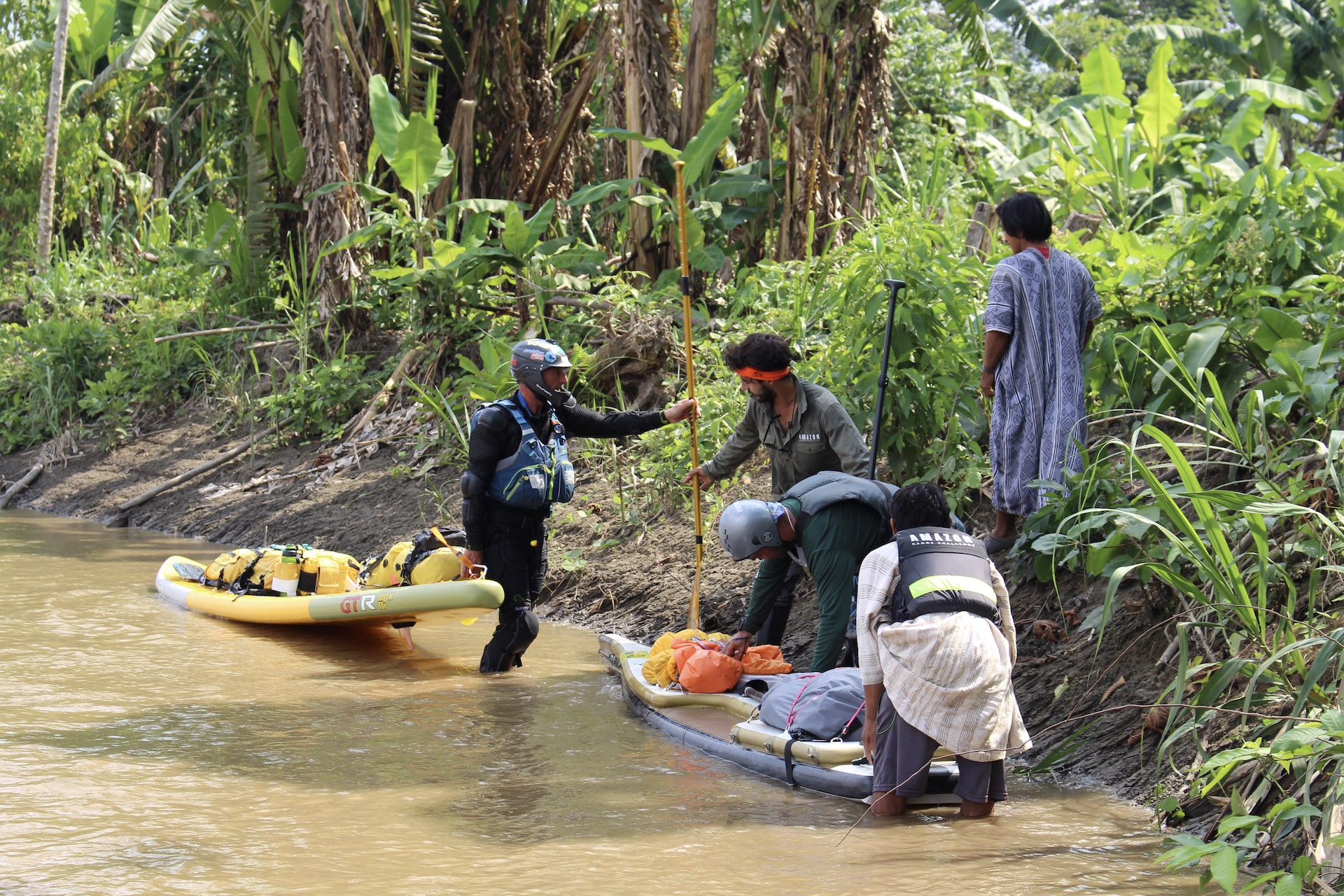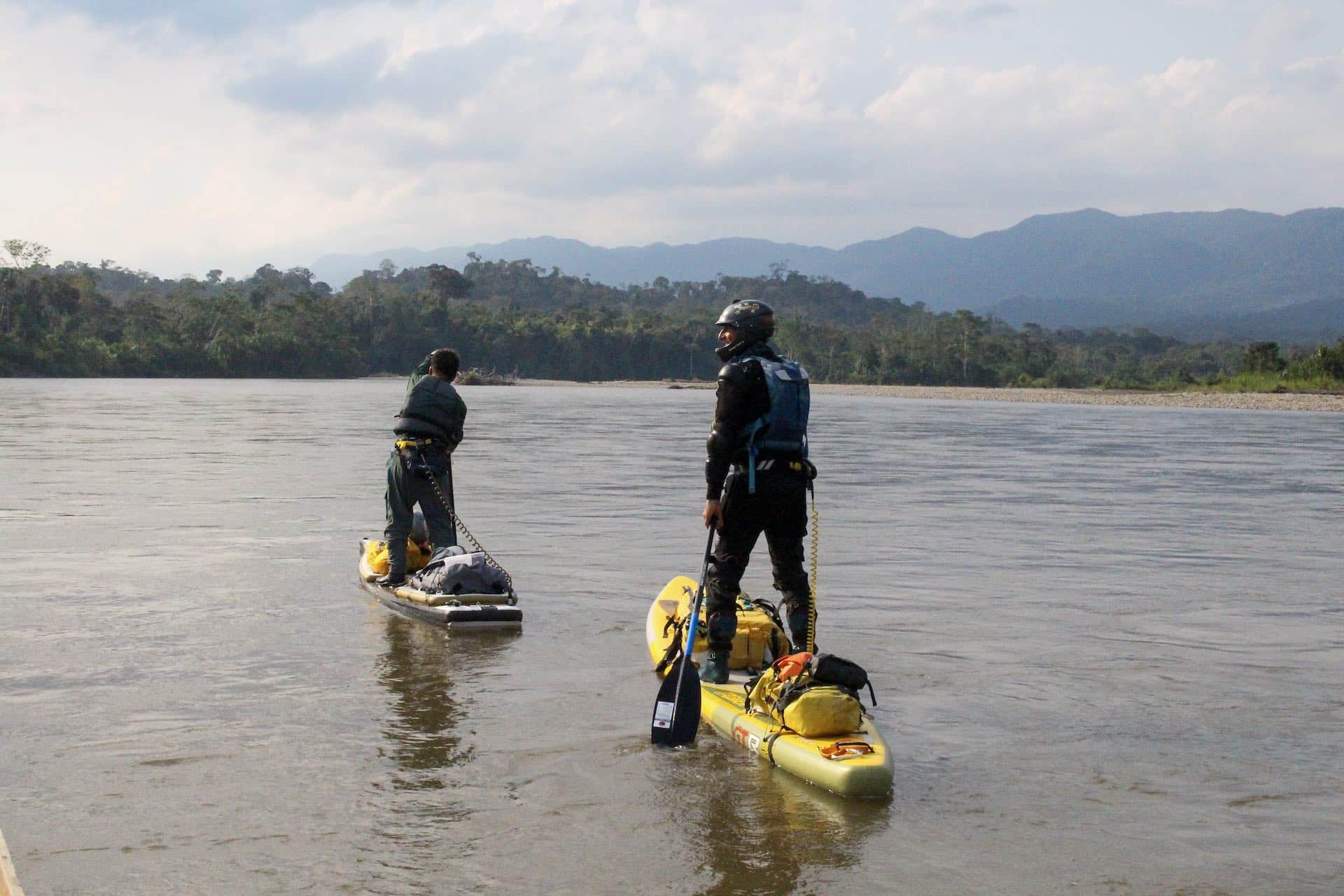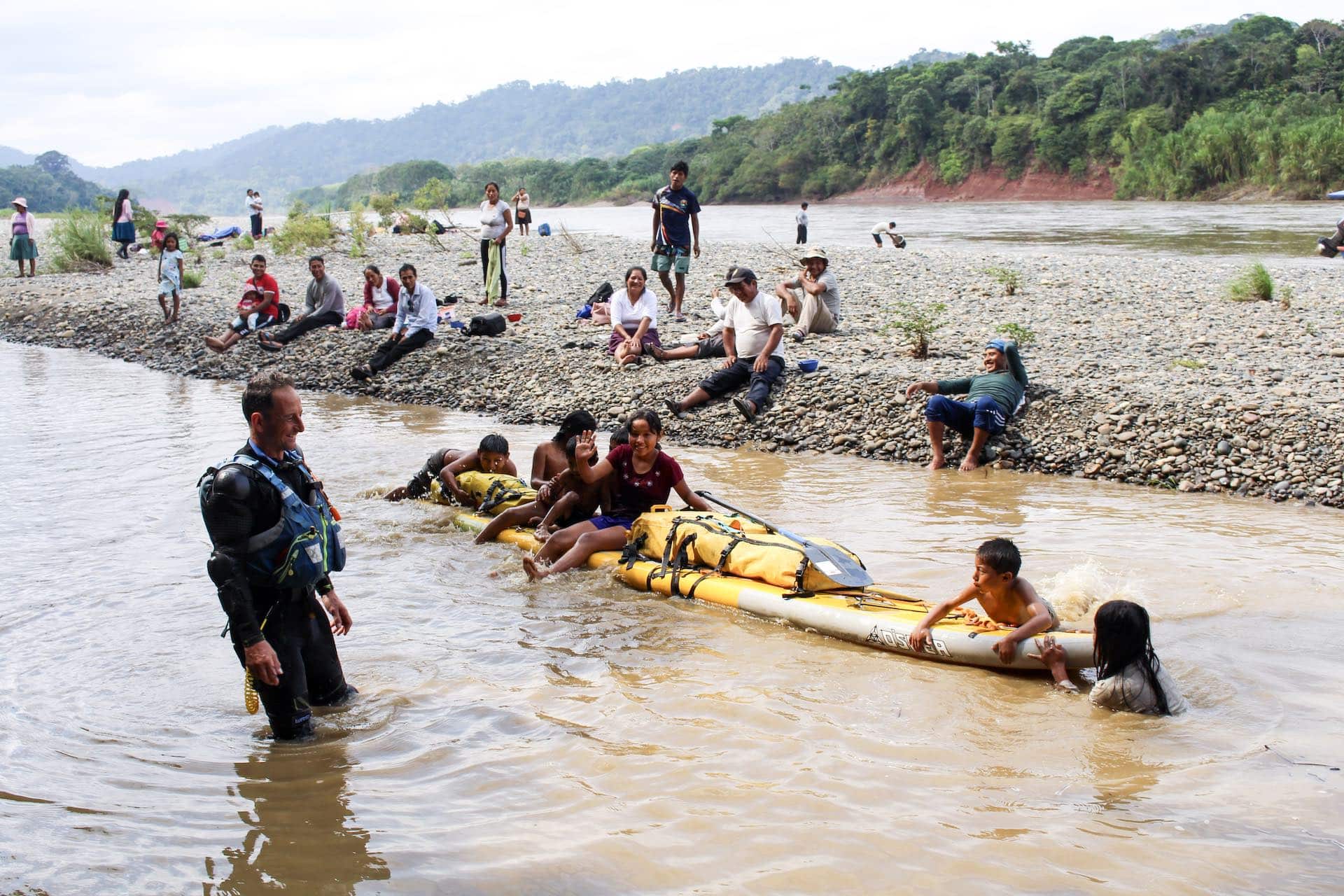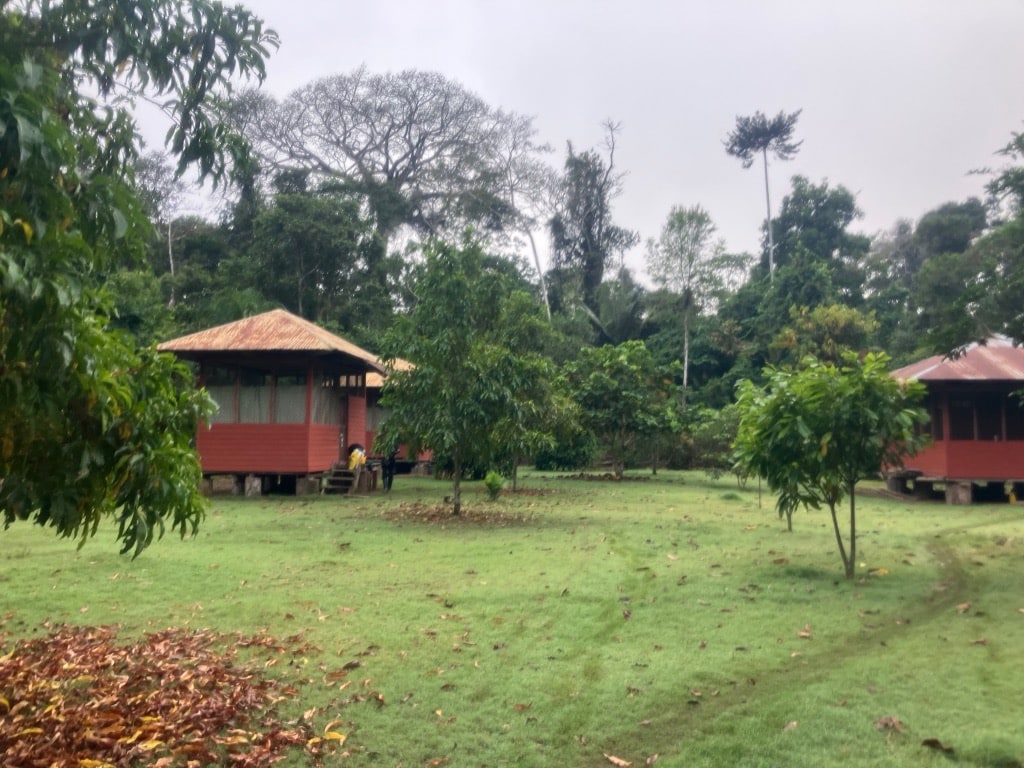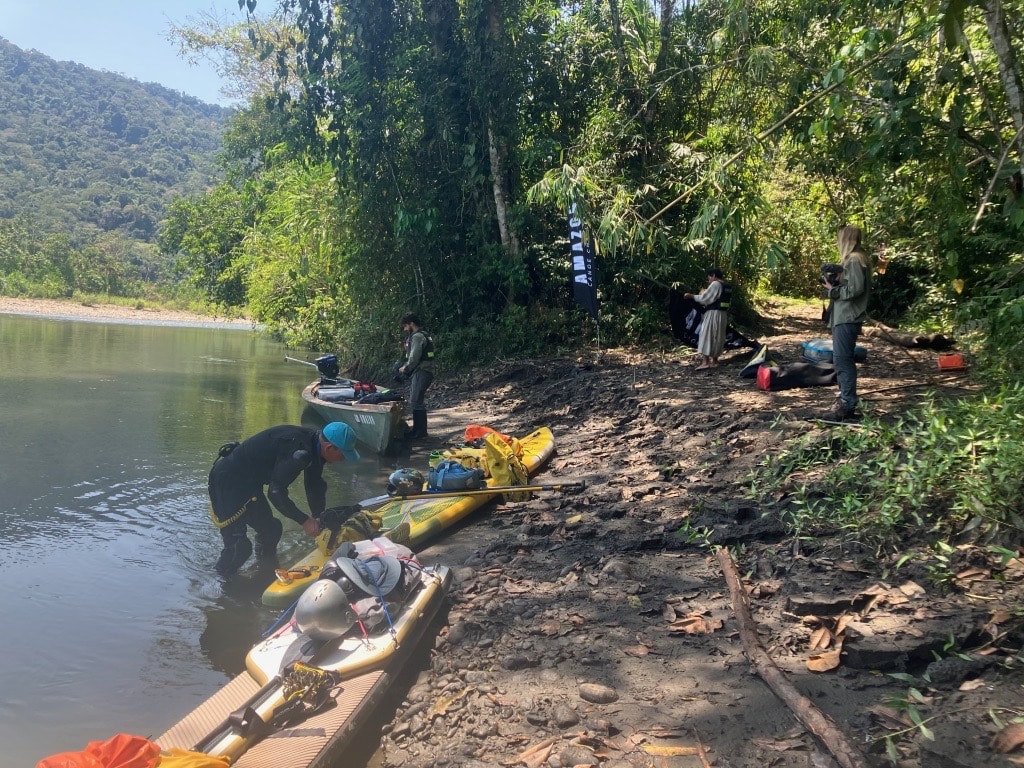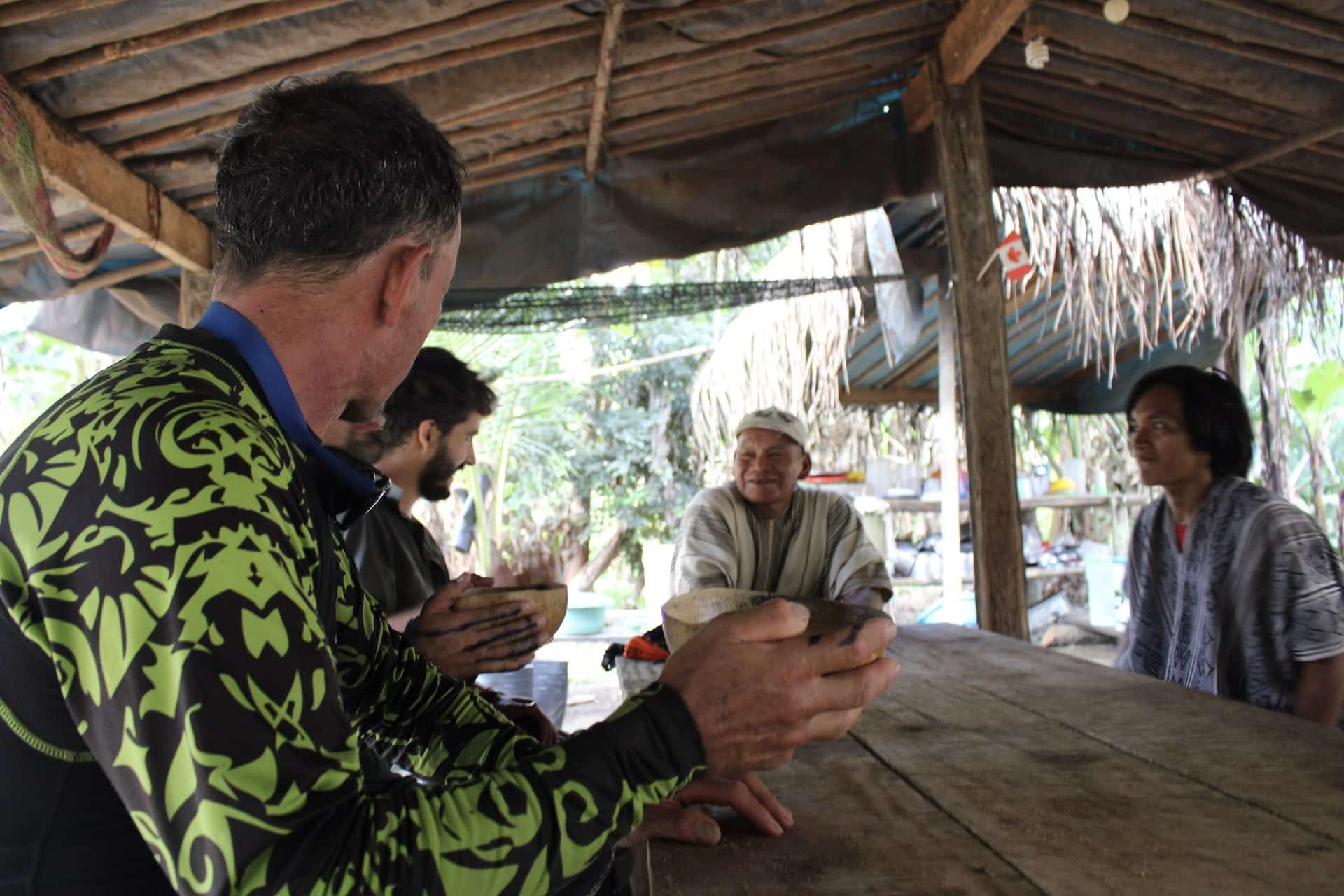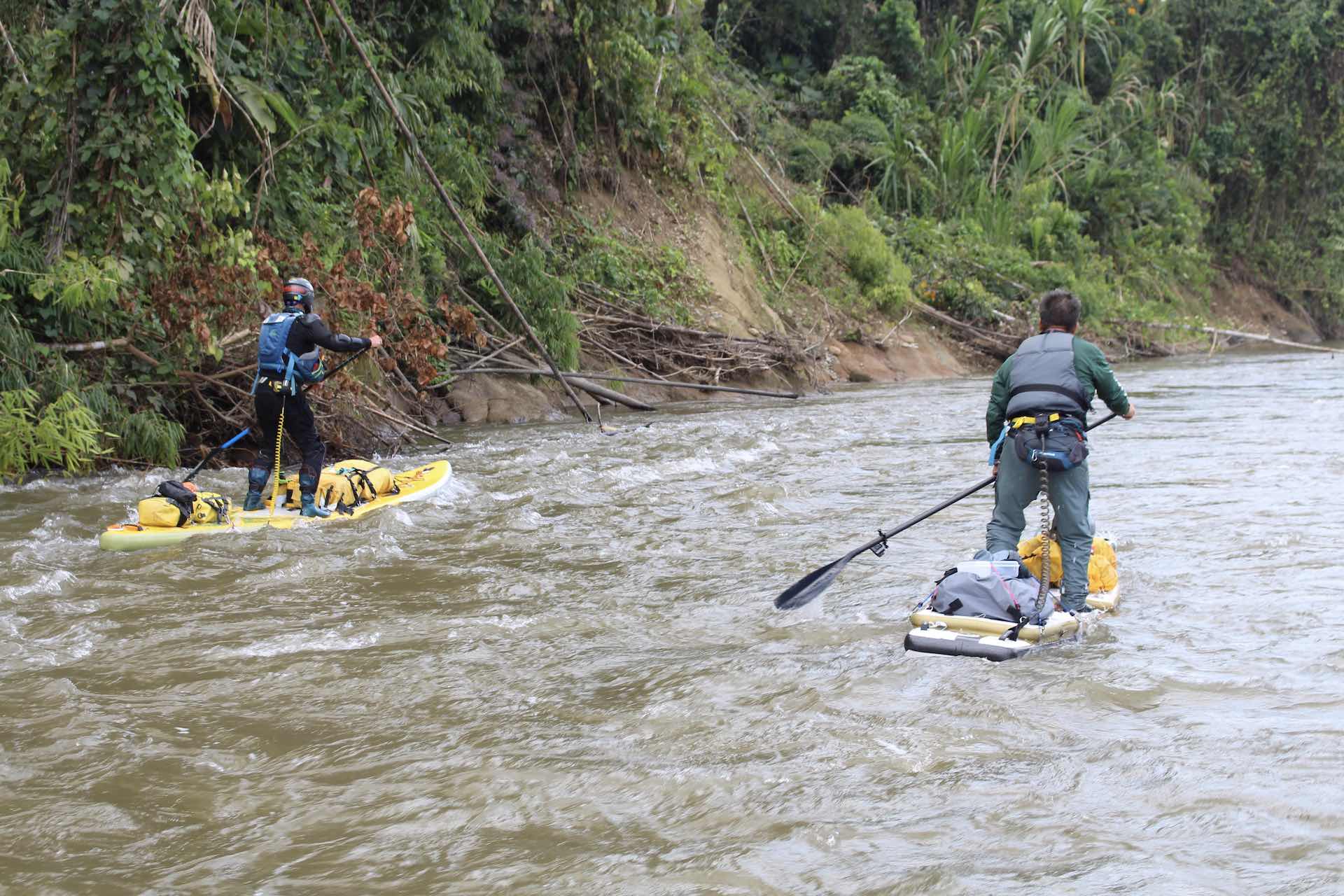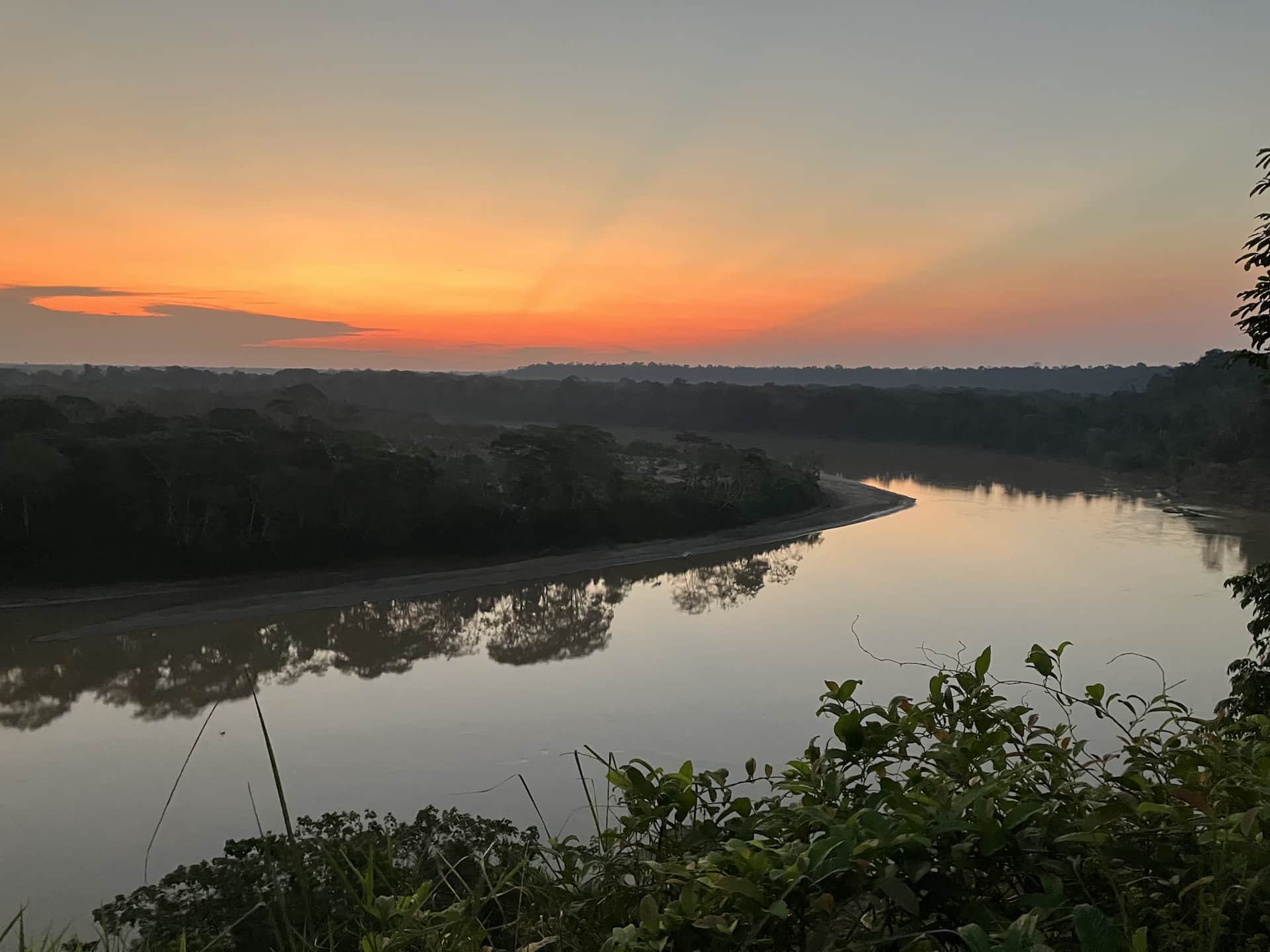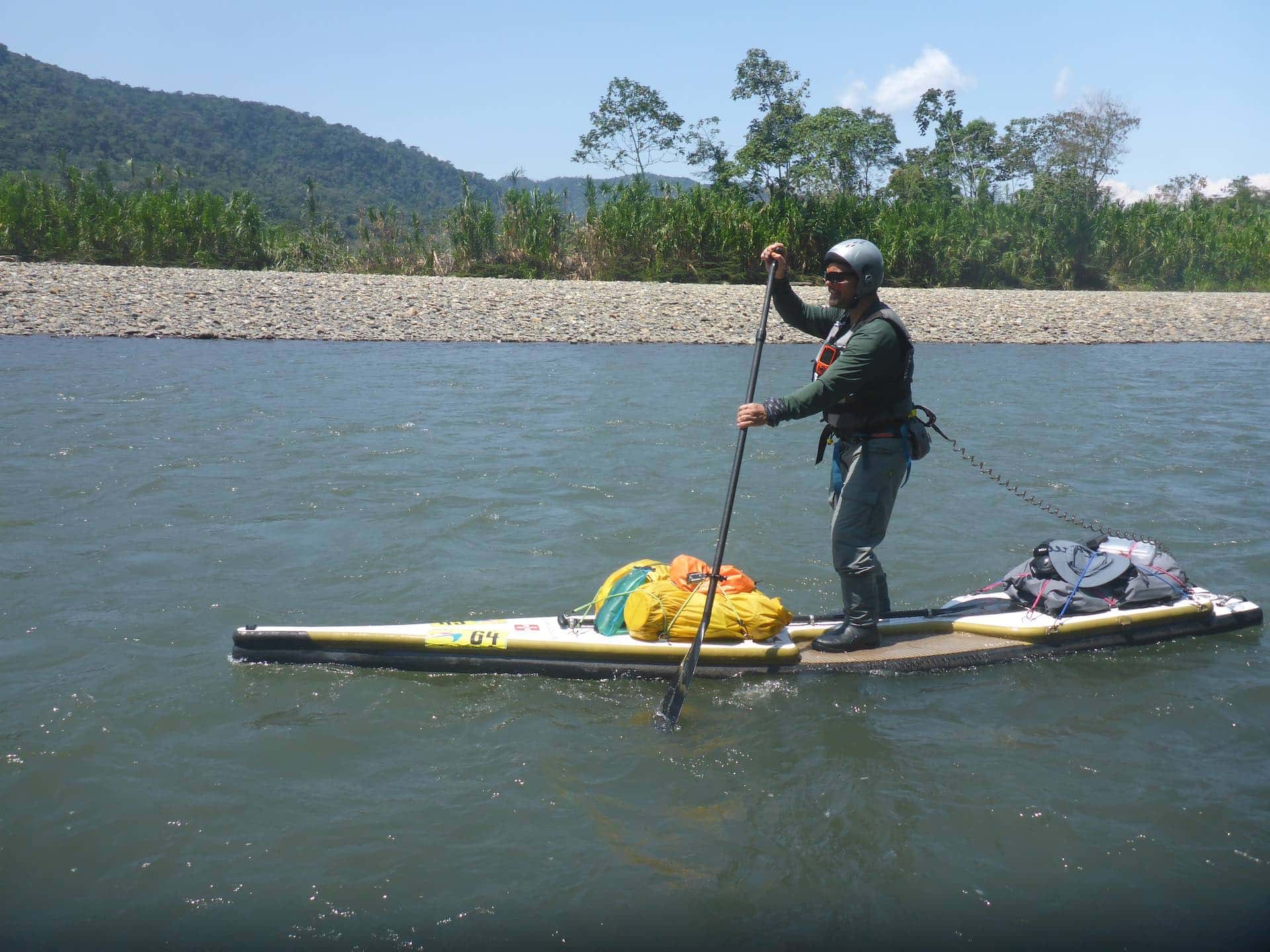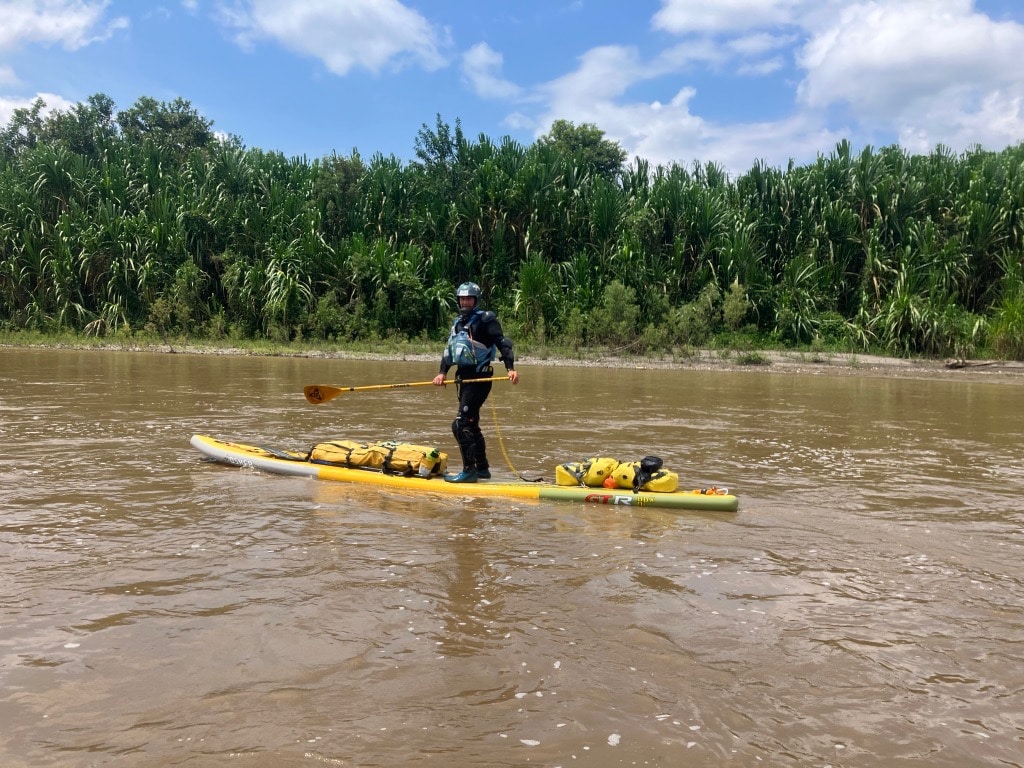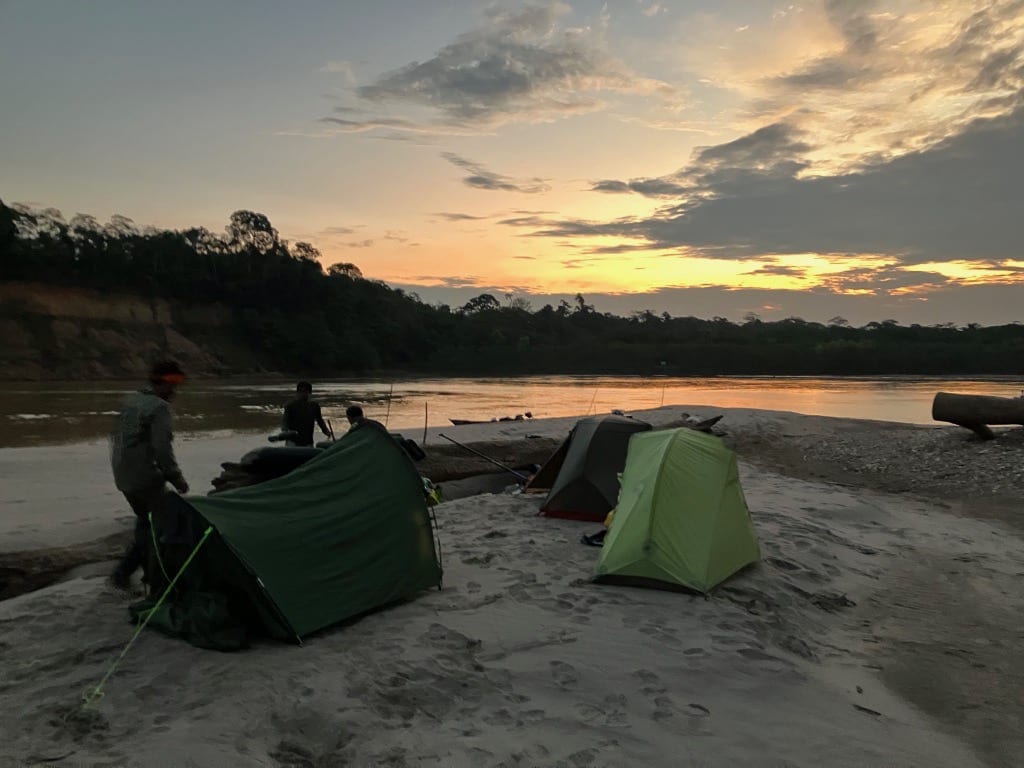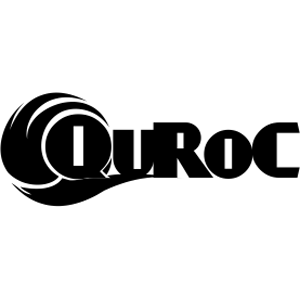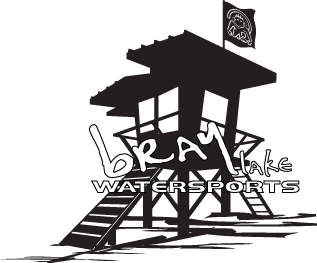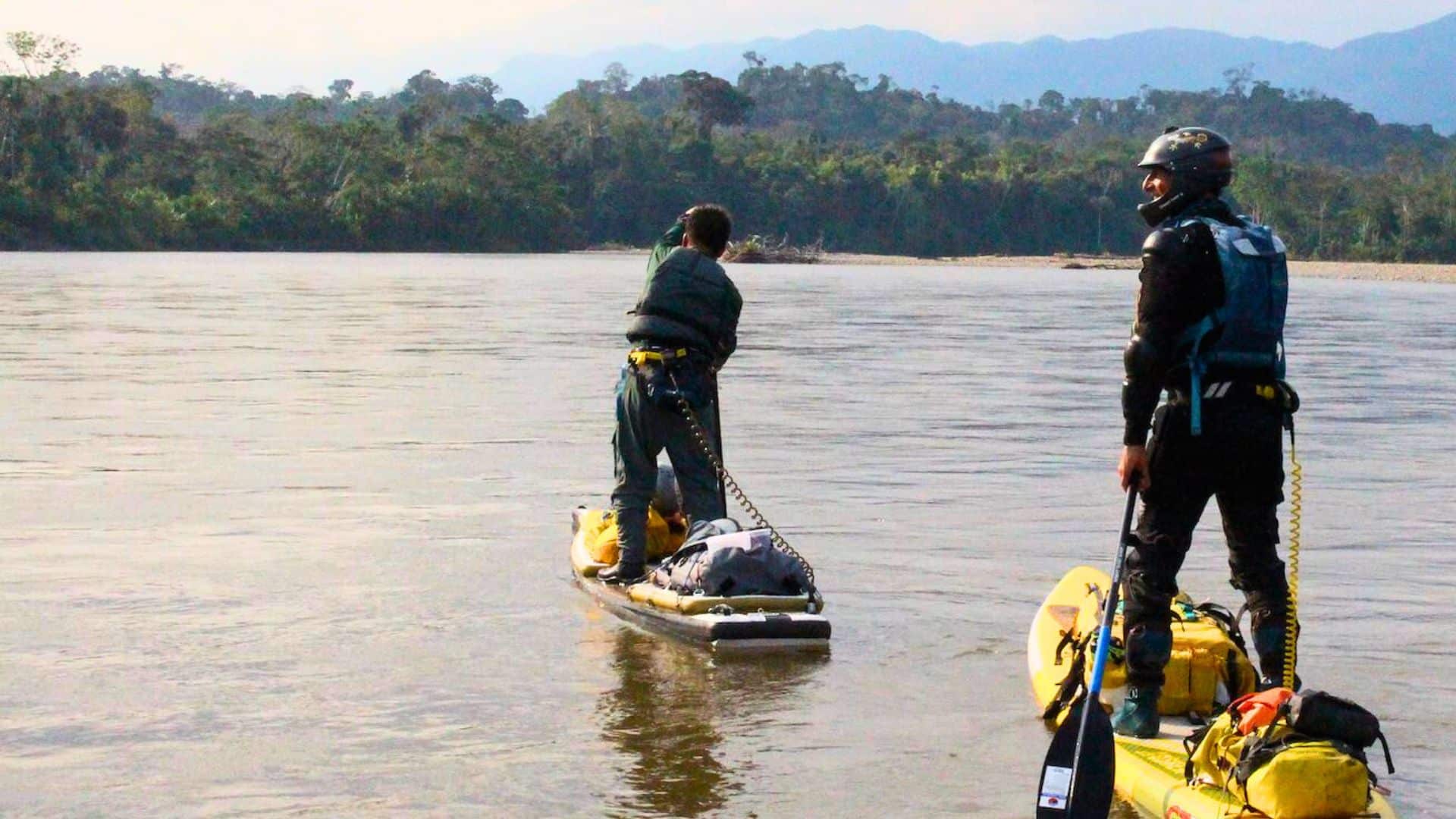
Thomas Schillig and Tony Bain formed the reconnaissance team that tested the navigability of the Madre del Dios River, Peru, using Stand Up Paddleboards. No stand-up paddler has ever been to this region of the Amazon, so could it be that they were the guinea pigs that the local animals might feast upon? Find out in this incredible read about one of the most interesting SUP adventures.
PREPARATIONS
Not only the SUP, but also tent, sleeping bag, food clothing and many other things we bring to the amazon.
After an adventurous journey from Cusco through mountain roads reaching altitudes of 4,000 meters, we finally arrive in Pillcopata, a small town located at the western end of the Amazon Rainforest in Peru.
Together with Tony Bain, we form the reconnaissance team that is testing the navigability of the Madre del Dios River using Stand Up Paddleboards. Or could it be that we are the guinea pigs that the local animals might feast upon? All of this, we will attempt to find out.
However, just a few hours later, during the briefing, there is reassurance. Carlos and Freya from the Amazon Canon Challenge present to us the over 300-kilometer route and explain that the wildlife is mostly peaceful and rather reserved. But there are also important considerations when encountering the local communities. While we will be staying with some communities, there are those who prefer no contact, and we should avoid their riverbanks.
Moreover, the fact that illegal extraction and transport of natural resources occur is addressed, explaining what we need to watch out for. All these pieces of information make our journey even more exciting, and we can hardly wait for the next day.
In this article
Touring & Exploring
Adventure & Lifestyle
Travel & Inspiration
THE CHALLENGE STARTS
On time, with an one-hour delay, our vehicle stands in front of the hostel. It’s an old, rusty, partially welded-together Unimog. We hoist all our luggage onto the open cargo area and take our seats on it. The bumpy ride takes us out of the village, and suddenly the driver steers through a meter-deep river and further into the thick of the rainforest. The path becomes narrower. Branches fly around us, the first ants inspect our luggage and our clothes.
START IN A NEW ADVENTURE
We are eagerly awaiting this challenge. No stand-up paddler has ever been to this region of the Amazon.
Finally, we reach our entry point where we unload everything and prepare our SUPs. It’s not so easy to set up a perfectly planned setup in the middle of the jungle where everything is damp and muddy. I manage it more poorly than well, something I’ll regret later.
Meanwhile, Angel has also arrived with the 10-meter-long canoe. He, along with Carlos and Freya from Amazon Challenge, will accompany this expedition. Angel is from the Shipetiari community, which we will be visiting. His task is to inquire with other communities whether we, or future paddlers, are welcome, or if we will spend the night on our own. Much here is still unplanned because we are on a reconnaissance trip, and so far, no SUP has ventured into this Amazon region.
We were told that on the first day, there would be Class 2-3 whitewater. Nevertheless, I decide to go with my 14’x26” Airboard Concept SUP, which has already proven itself twice on the Yukon River. From the third day onwards, it will be at most Class 1-2 whitewater, but I fully expect to get wet today. I brought a drysuit just in case it rains nonstop, but with temperatures over 30°C, it’s not even a consideration.
It didn’t take two kilometers, and I’m in the water. Maybe it’s the unexpected currents underwater, or it’s the massive load in the wrong place on the SUP that makes my board tip too quickly, but a cooling dip feels good. Over time, I learn to deal with this idiosyncrasy, but I definitely need to optimize the cargo. Tony seems to be having more fun navigating the rapids with his 17” OShea SUP.
The river doesn’t have much water. There are gravel islands and shallows everywhere that need to be carefully navigated. If you don’t pay attention for a moment, the board scrapes over the worn stones. Fortunately, Tony is an absolute river pro who knows these types of rivers from New Zealand. He has a satellite view and anticipates situations extremely far ahead, as if he could view them from a bird’s eye perspective.
SHINTUYA COMMUNITY
Part of our trip is to visit local communities and see how they live and learn from them.
In the late afternoon, we reach the Shintuya Community, which has turned a hot spring on the left bank of the river into a local attraction. They have built a few simple huts for the few tourists who venture here. So tonight, we not only enjoy the luxury of a hot bath but also have the opportunity to stay in the huts and rearrange our luggage.
As darkness falls, the family of the Shintuya Community treats us to an excellent dinner. Vegetables and yucca, as well as fish cooked in bamboo, are on the menu. A wonderful aroma wafts towards us as we open the bamboo tube and arrange the fish on our plates.
After dinner, Walter and Julio introduce us to the customs of their tribe. They show us how to craft arrows for hunting from lightweight wood, feathers, and thread, and invite us to make our own. It’s an extremely delicate process where two half-feathers are glued to the back of the arrow using a resin mixture and then secured with fine pineapple fiber.
We all sit around the fire, and Walter tells us stories of the forest and the river. He is one of the last inhabitants who grew up in the Shintuya Community when it had no contact with the outside world. As Walter shares these stories with us, we receive the tribal body painting, a kind of tattoo whose color is extracted from the essence of a fruit and will last for about a week.
In the late afternoon, we reach the Shintuya Community, which has turned a hot spring on the left bank of the river into a local attraction. They have built a few simple huts for the few tourists who venture here. So tonight, we not only enjoy the luxury of a hot bath but also have the opportunity to stay in the huts and rearrange our luggage.
As darkness falls, the family of the Shintuya Community treats us to an excellent dinner. Vegetables and yucca, as well as fish cooked in bamboo, are on the menu. A wonderful aroma wafts towards us as we open the bamboo tube and arrange the fish on our plates.
After dinner, Walter and Julio introduce us to the customs of their tribe. They show us how to craft arrows for hunting from lightweight wood, feathers, and thread, and invite us to make our own. It’s an extremely delicate process where two half-feathers are glued to the back of the arrow using a resin mixture and then secured with fine pineapple fiber.
We all sit around the fire, and Walter tells us stories of the forest and the river. He is one of the last inhabitants who grew up in the Shintuya Community when it had no contact with the outside world. As Walter shares these stories with us, we receive the tribal body painting, a kind of tattoo whose color is extracted from the essence of a fruit and will last for about a week.
SHIPETIARI COMMUNITY
Families who usully have no contact with western visitors welcome us warmly and show us their culture.
A short walk leads us into the interior of the island, where we are welcomed by Mateo. As soon as we sit down at his family’s large wooden table, we are invited to drink Masato. Masato is a thick yucca juice, almost porridge-like, which has been fermented for tree to four days. It is served in a large bowl made of wood, accepted with a “Gracias,” and drank with a “Salud.”
It’s around 4 pm when the children return from school. Together, we go back to the river and take turns letting as many children as possible ride on our SUPs. They have a blast, and it’s heartwarming to see the children playing around on our SUPs.
About an hour later, the whole group of about a dozen children sits at the large wooden table, peacefully enjoying the big cake and hot chocolate we brought as gifts.
During this time, we set up our tents right next to Mateo’s family’s wooden hut. This is probably our last camp in inhabited areas.
The community serves us a simple but nourishing meal, a soup which is a typical and often found in South America. It contains rice, some chicken, and yucca, which is the staple food in this region and is grown everywhere.
The soil in this Amazon region is extremely infertile. It’s hard to believe when you see all this greenery, but fruits and vegetables hardly thrive in this soil. To make the soil fertile, existing trees and plants are burned, and the earth is enriched with the ashes. This “slash and burn” method is unfortunately not very sustainable but by far not the biggest issue of deforestation.
In the evening, we sit comfortably around the fire with the family. Masato is passed around, and Mateo tells us stories about the animals of the Amazon.
Meanwhile, we grill “Platanos”, also known as cooking bananas, which are served on large banana leaves.
It’s a clear night with countless stars visible, but upstream, we can see flashes of lightning. Perhaps these storms will cause the river to rise again. Nighttime temperatures barely drop below 20°C, and it’s too warm in our tents, making it difficult for us to fall asleep. We lay sweating on our mats without sleeping bags, listening to the countless sounds coming from the thicket.
After a hearty breakfast consisting of fish, rice, and vegetables, a Shipetiari shows us how to shoot with a bow and arrow. “It’s amazing how much tension this bow has,” notes Tony, who knows how to handle a sports bow. The proper hunting arrows are longer than the ones we made ourselves the day before, and they have various removable tips that can be changed depending on the target. It takes us several tries to finally hit our target from a short distance. We are deeply touched when these arrows are given to us as a farewell gift.
The children are already in school, and most of the adults are in the fields. A few wave goodbye to us, and then it’s on to the third day. The water has risen again, and the current has increased once more. We won’t need more than 4 hours for the next 50 kilometers.
MASHCO-PIRO (NOMOLE)
We also paddle through areas where strangers are not really welcome.
Today, we need to be cautious because on the left bank of the river, there is a stretch where the Mashco Piro (Nomole) live, a community that wishes to have no contact with the outside world. Intruders into their territory may, under certain circumstances, not live to tell of their visit. The only exchange this community maintains is when the village elder occasionally goes to the other side of the river to talk to a contact person. This individual speaks the language of the Mashco Piro (Nomole), who otherwise do not speak Spanish, and then relays this information to the Ministry of Culture in Peru.
We stay as close as possible to the right side of the river, with the support canoe that usually follows far behind us, leaving the choice of our route entirely up to us. We cross this passage without any problems as the river is quite wide, and by afternoon, we reach Boca Manu, where our support canoe replenishes our supplies. On this occasion, we also enjoy a warm meal at a simple restaurant.
Not far from there is a small grassy airstrip where goods are occasionally landed. We were cautioned not to take photos in its vicinity, as not all goods may be properly declared.
NESTOR’S PLACE
A paradise in the middle of the Amazon.
Towards evening, we arrive at Nestor’s estate. We hoist our SUPs up the steep riverbank over 10 meters and hide them in the rainforest. Nestor mentions that everything not from here arouses curiosity. Then, we follow him for about 15 minutes on a path through the rainforest until we suddenly arrive at a large green clearing. Truly, a real estate! Nestor has created a little paradise here. Seven simple cabins without electricity but with private showers and toilets, as well as a communal area protected by fine grilles to keep out unwanted guests.
Nestor is quite humble about it. He says he saved up for a long time to prepare this property but is not particularly eager to attract guests. Those who know him are welcome, and he prefers to rely on word-of-mouth recommendations.
In the meantime, he had already picked some fruits from the trees and given them to us to eat. Fruits like “Caimo” and other names unknown to us, which none of us had ever eaten before, and they tasted super sweet.
On a nighttime walk, Nestor shows us his realm. We traverse the rainforest on narrow paths and tree trunk bridges, discovering various nocturnal animals such as tarantulas and monkeys, always accompanied by the breathtaking soundscape.
THE RELENTLESS SEARCH FOR GOLD
The search for mineral resources in the Amazon leaves its mark on this paradise.
Throughout the night, we hear a variety of animal sounds that gradually become our lullaby – a paradise-like lullaby, and yet we must leave this little paradise.
Ahead of us lies a long day with over 60 kilometers to cover. We are accompanied by countless butterflies that feed on the salt from our sweaty clothes and constantly settle on us while we paddle.
On the shore, small mounds of debris indicate gold mining activities, which become more prevalent as we paddle downstream, sometimes making it difficult to navigate through them. Alongside, there are huge machines that at times tear down entire embankments.
Gold mining itself might not be the main problem, but rather the way it is carried out. Gold was mined in small quantities early on, but over time, increasingly aggressive methods have been employed.
Until a few years ago, illegal mines were successfully shut down by the government and the military. However, for some reason, they are now allowed to operate unchecked. To extract gold, mercury is used, and many of the workers may not be aware of the dangers. Wastewater is sometimes discharged into the river without proper treatment. Additionally, hectares of forest are being cleared, and once the mining sites are abandoned, reforestation is rarely done.
Another issue is that large mining companies sometimes buy land from communities and lure them to mining towns with job offers. As a result, there are already numerous abandoned communities in the area, and it was not possible to find a community where we could stay overnight.
At a river bend that seems spared from machine noise, we set up our ultra light tents, and we notice that Angel’s setup is even lighter. He finds four long branches, wedges them vertically in the boat, and stretches a mosquito net over them – done.
He also isn’t a fan of our dried food that we prepare in bags. So, he decides to cast his net at the riverbank after dark to catch fresh fish. After half an hour, we’ve already caught enough for the four of us, and the fish sizzles over the campfire. Suddenly, he shines his flashlight on the shore. Two eyes of a caiman glisten in the dark. These small crocodiles are extremely shy and pose no threat to us.
THE PEACE IS OVER
Gold mining towns bring life to the riverbanks and the river.
We are somewhat surprised on the morning of the fifth day when we discover fresh jaguar tracks near our tents. Apparently, we weren’t entirely alone.
As it is already light before six o’clock, we are ready to start early and begin paddling at 8 AM. A rainfront is looming ahead of us. We welcome every cloud that provides some shade, as paddling is much more bearable than under the scorching sun with temperatures over 30°C. The rain only lasts a short while, just 15 minutes of drizzle, and it’s all over.
After nearly 60 kilometers of paddling, we reach Boca Colorado, a gold mining town with countless shops and workshops to maintain the machines. We take the opportunity to replenish our water supplies. However, we don’t stay here long because it will be dark in three hours, and we want to paddle another good ten kilometers and find a quiet spot on the riverbank.
When we arrive at a suitable river bend, everything has to happen quickly. For security reasons, the SUPs are immediately hidden in a depression because we should not draw attention to ourselves.
Miners and locals are not the problem, but in recent years, there have been repeated attacks on miners by bandits coming upstream from Puerto Maldonado. We Gringos might appear wealthy with our SUPs and could potentially be targets. In fact, we were already asked in Boca Colorado if we were gold buyers. Without visible SUPs, with just a wooden canoe by the shore, we shouldn’t stand out too much after dark.
FINAL DAY
Every adventure comes to an end.
It’s the last day, and we become aware that this adventure is slowly coming to an end. Even though we can feel the kilometers in our muscles, we savor the final twists of this breathtaking river.
We have the feeling that the presence of the two Gringos, standing and paddling down the river, has become known. Where at the beginning the boatmen only waved back hesitantly, we are now greeted with a joyful “Hola,” and bananas are handed to us from passing boats.
It turns out that the bandit problem has apparently been solved in recent months. “We sorted them out” one miner said, laughing and making a clear hand gesture.
In the afternoon of the sixth day, we reach our destination, the Los Amigos Biological Station. We’ve made it! After 333 kilometers, we have reached our goal. However, it’s not the kilometers we counted. It’s the unique and unforgettable encounters we were fortunate to experience that made this adventure incomparable.
We are warmly welcomed and celebrated by Carlos and Angel. Yet, we are still deep in the Amazon rainforest. Perched high above the treetops on a small plateau, this research station even has its own DNA lab. Here, not only are countless animal species studied, but also the effects of mining on water and the overall atmosphere.
It’s a small luxury that we can enjoy here. Each of us has his own bungalow and enough space to spread out all our wet gear and pack it up neatly.
The next day, we must definitely leave the Amazon. We wait by the Madre del Dios riverbank for a speedboat to take us towards Puerto Maldonado. During the three-hour journey downstream, everyone is lost in their thoughts. There are so many unforgettable impressions to process. The encounters with the communities were unique and will always remain in our memories. And in the back of our minds, the thought that this river continues westward to Bolivia from Puerto Maldonado. – To be continued…? Maybe.
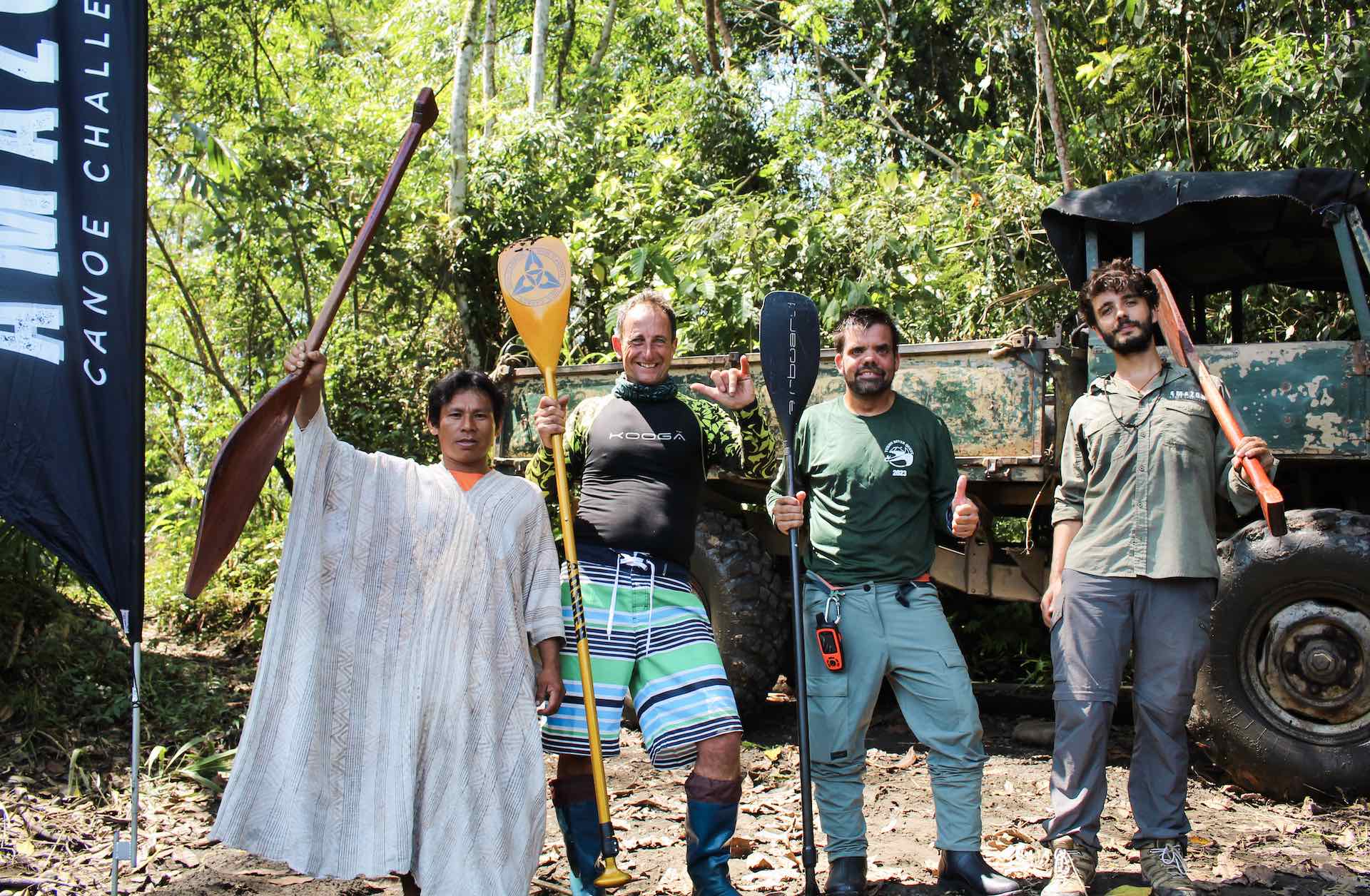
About - Tony Bain
A SUPMADKIWI born in New Zealand and now living and running a SUP school in North Wales. Grown up on high country stations and farms on the South Island of New Zealand. Always had a keen interest in outdoor adventures. Peru and Canada has always been the places I have wanted to explore.
Been pushing the boundaries of SUP for 10 years. SUP ambassador for OShea SUP. First great adventure was in April 2013 when 4 of Guys walked, cycled and paddled the 354km the length of the River Severn, the longest river in the United Kingdom.
Then after 3 years of trying, I was allowed to entered one of the toughest multisport races in the world, New Zealand’s Coast to Coast, where participants run, ride and paddle 243 kms across the South Island of New Zealand, I’m still the only person in the world to have been allowed to compete in this event on a SUP.
The Isle of Anglesey sits off the North coast of Wales and 2017 I was the first person to circumnavigate it nonstop. This overnight trip taking 18.5hrs.
Yukon River Quest (715kms) sadly did not finish, but returned to the Yukon 1000 in 2018 being one of the 1st 6 in the world to be allowed to participate in it.
In New Zealand. I have paddled on most of the south Islands big lakes, and lots of the south Islands rivers Clutha (338km 4 day trip), Rakaia, Waimakariri, Buller from Alps to Ocean. These journeys are around 130kms in a day.
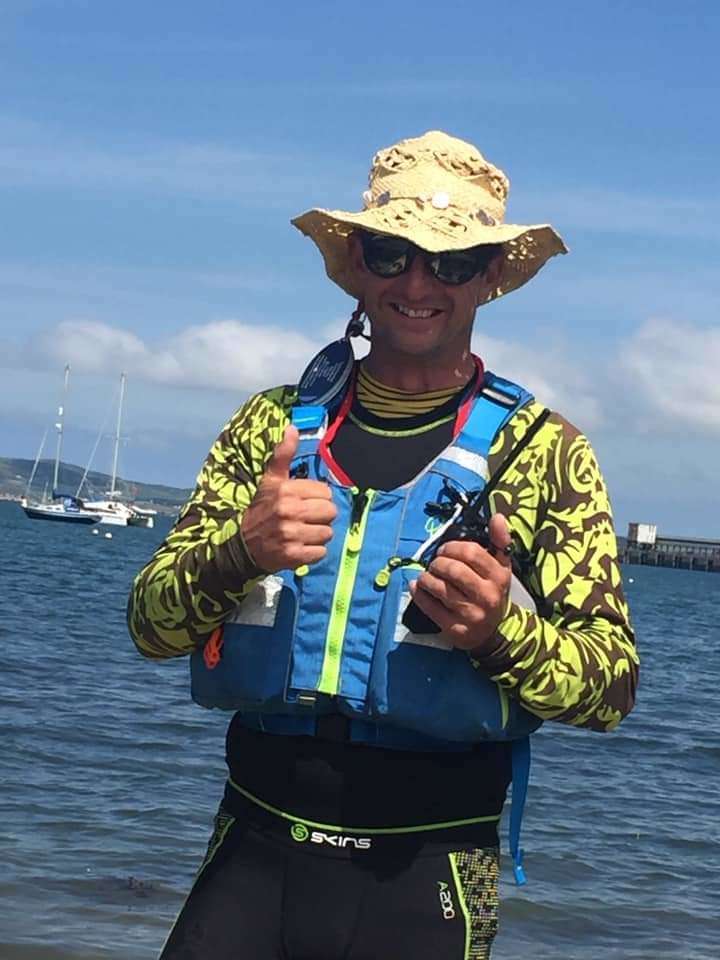
About - Thomas Schillig
Stand Up Paddleboarder from Switzerland. Paddling since 2011 and has been working for the Swiss SUP brand Airboard for ten years and is responsible for many innovations in inflatable SUP.
Since 2018 addicted to ultra long distances. In 2020, depending on the situation, I circumnavigated the 25 largest Swiss lakes including some 24h-Nonstop trips. In 2021 I paddled the 10 largest Swiss rivers including Whitewater.
Since it’s allowed to travel again, I’ve been traveling internationally again and paddling over 2000km a year. Current highlight: completed the Yukon River Quest (715km) for the second time, this time in 2nd place.
When I’m not paddling, I’m often out in the mountains on my mountain bike or snow-bodyboarding in the winter.
I was already traveling in the Madre del Dios region more than 10 years ago, but without SUP. The Amazon fascinated me even then, but never in my life would I have thought that I would really return to this amazing nature on the SUP.
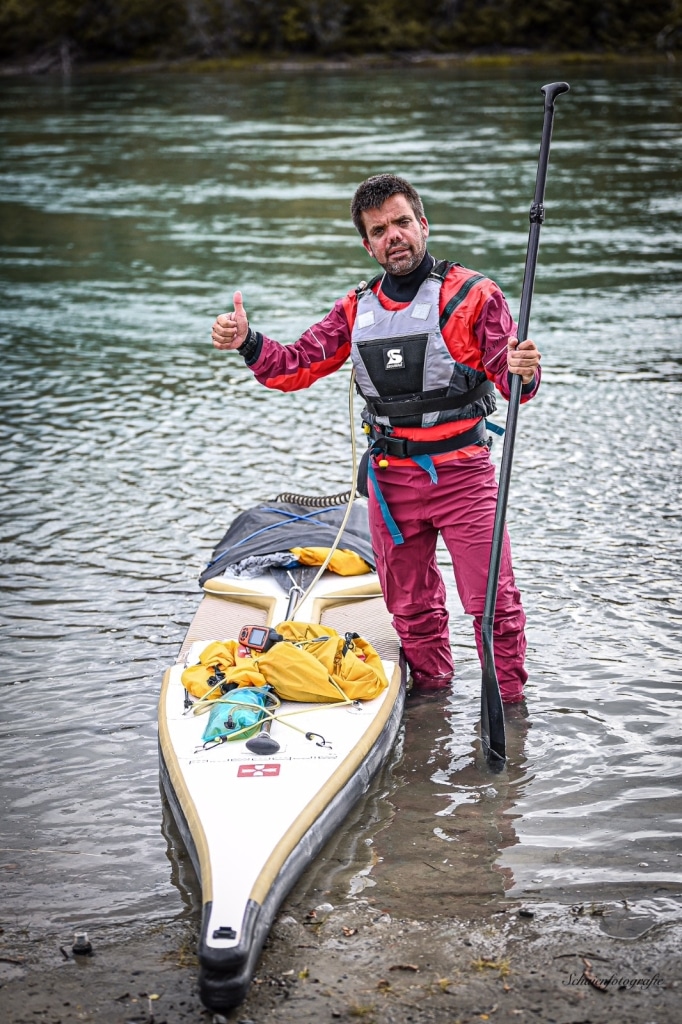
About - Angel
Shipetiari Kommune
Angel is from the community of Shipitiari. This indigenous community is of the Machiguenga indigenous people. They are not from this area originally but moved here to escape the slavery of the rubber barons from the Urubamba region.
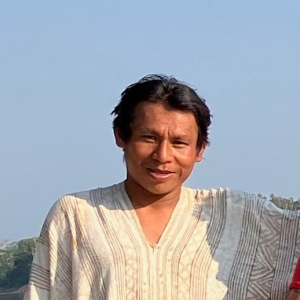
About - Carlos & Freya
Amazon Canoe Challange
When dreaming of the Amazon Canoe Challenge, we wanted to create an experience that would not only be an unforgettable adventure, but one that creates actual positive change. Our desire to give something back is what drives us – To create real impact through community empowerment, partnerships with local organizations and training.
Through tourism, we aim to support local communities with an alternative source of income, reducing the need to rely on the illegal logging, petroleum and narcotrafficking industries that are causing the environment and people in these areas so much harm. We may be small, but we aim for big change.
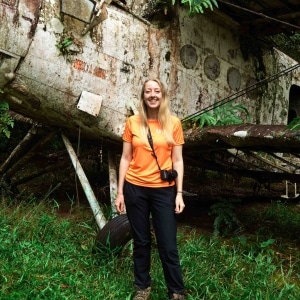
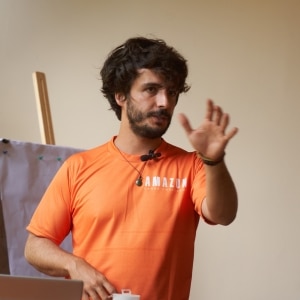
Mashco-Piro
The Mashco-Piro or Mascho Piro, also known as the Cujareño people and Nomole, are an indigenous tribe of nomadic hunter-gatherers who inhabit the remote regions of the Amazon rainforest. They live in Manú National Park in the Madre de Dios Region in Peru. They have in the past actively avoided contact with non-native peoples.
In 1894, most of the Mashco-Piro tribe was slaughtered by the private army of Carlos Fitzcarrald, in the upper Manú River area. The survivors retreated to the remote forest areas. The sightings of the Mashco-Piro tribe members increased in the 21st century. According to the anthropologist Glenn Shepard, who had an encounter with the Mashco-Piro in 1999, the increased sightings of the tribe could be due to illegal logging in the area and low-flying aircraft associated with oil and gas exploration.
In September 2007, a group of ecologists filmed about 20 members of the Mashco-Piro tribe from a helicopter flying above the Alto Purús national park. The group had established camp on the banks of the Las Piedras river near the Peruvian and Brazilian border. Scientists believe that the tribe prefers to construct palm-leaf huts on riverbanks during the dry season for fishing. During the wet season, they retreat to the rain forest. Similar huts were spotted in the 1980s.
In August 2013, the BBC reported that a group of Mashco-Piros had been seen apparently asking neighboring villagers for food. The Peruvian government has banned contact with the Mashco-Piros for fear that they might be infected by strangers with diseases to which the Mashco-Piros have not built up immunity.
Source: Wikipedia
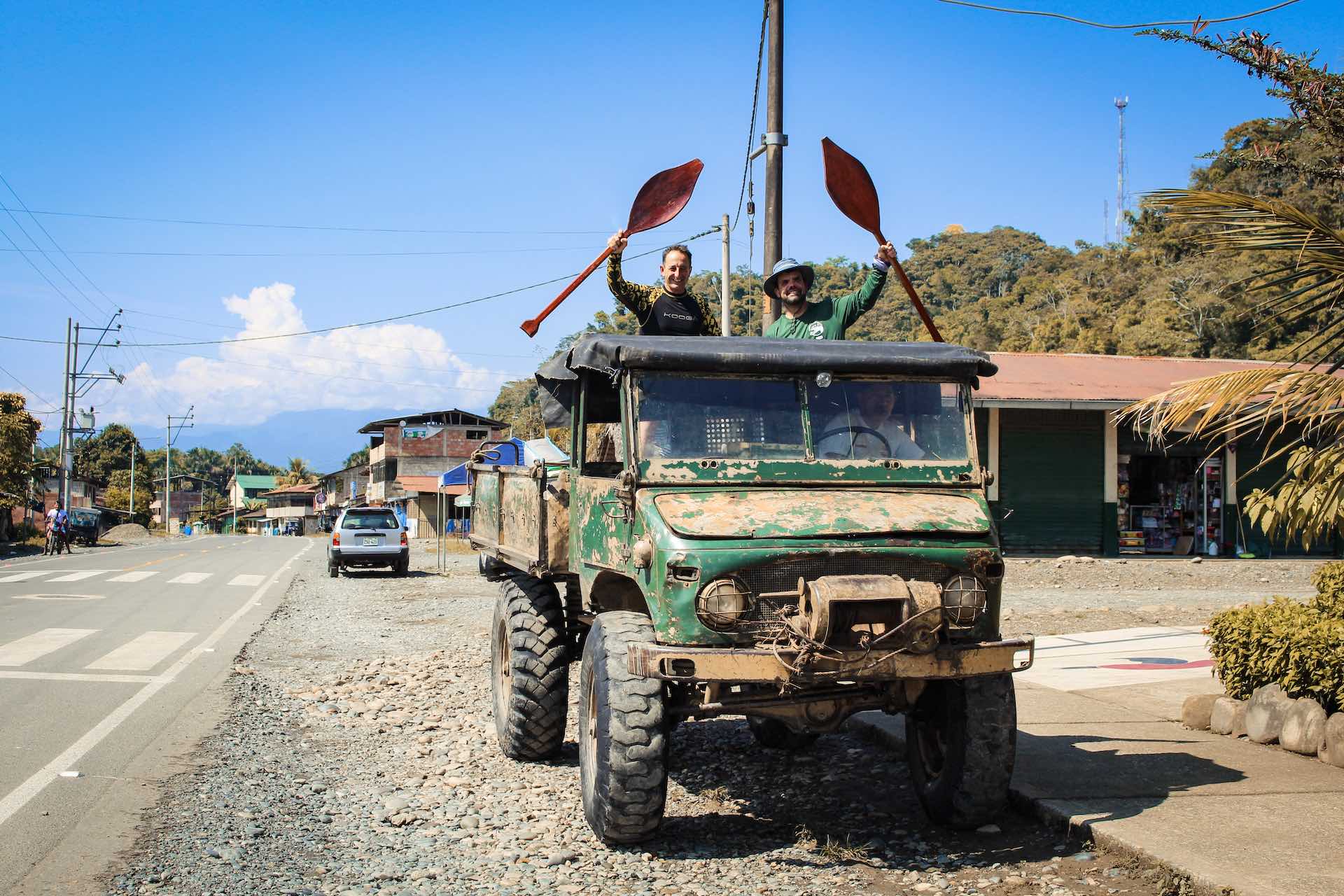
Related posts

